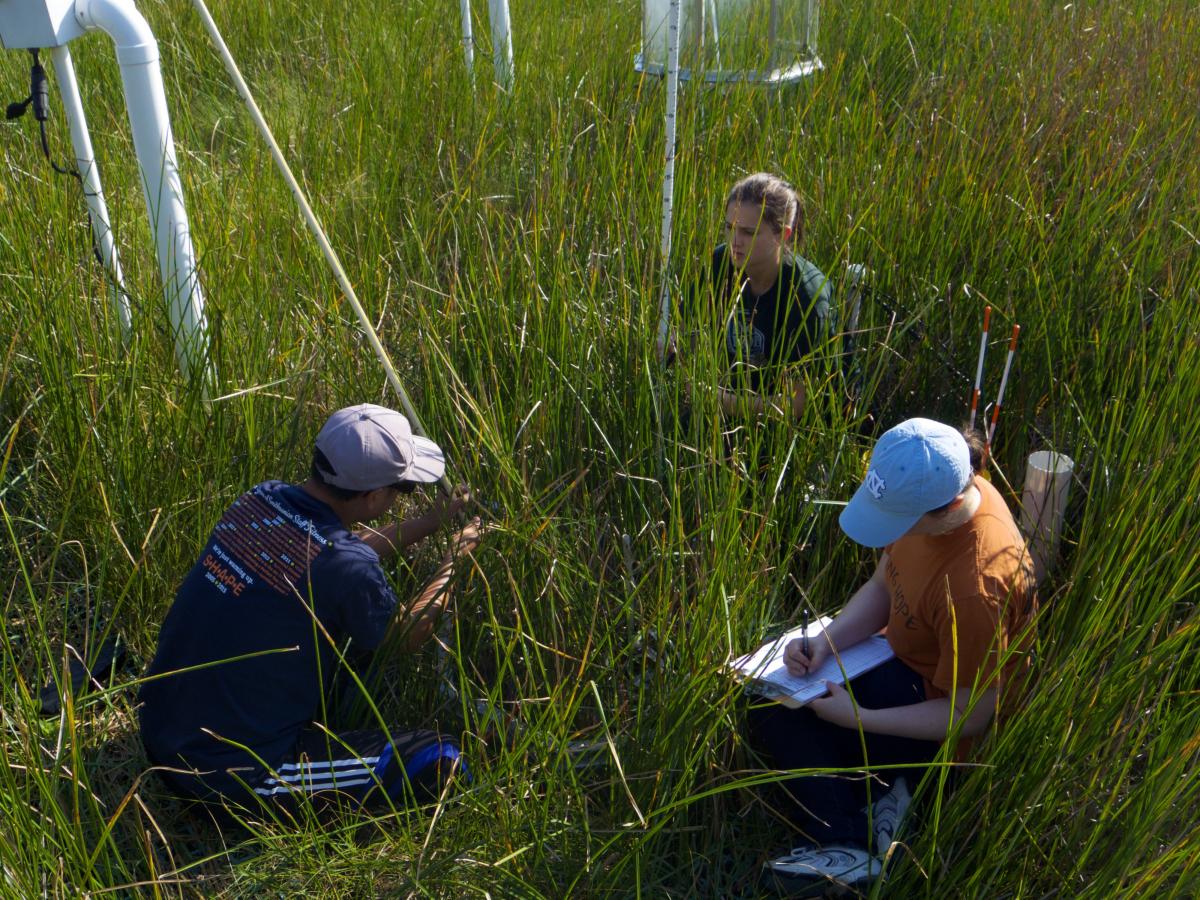Methods

GCREW is an area in the Kirpatrick Marsh that is built for scientific research. A boardwalk runs through the marsh, giving scientists access to experimental plots, many of which have chambers for raising the carbon dioxide concentration around the plants. The chambers are made of PVC and plastics and they are different sizes based on the species of plant that grows inside. The chambers are open on the top and bottom, but block the wind so that carbon dioxide will not blow away too fast after it is pumped in. This creates the conditions of a changing climate that the whole world will experience by the year 2100.
Although there are different projects, the methods for measurement are the same. For each plant inside the chamber, we ask volunteers to measure the height (using long poles), and width (using calipers). There can be up to 200 plants to measure in one chamber, so this does take some time!

- As CO2 levels continue to rise, will the plants in this salt marsh be a carbon sink (buildup of solid organic carbon that is stored)?
- Will atmospheric changes in gases help plants survive sea-level rise?
- Does more CO2 promote invasion by non-native plants?

